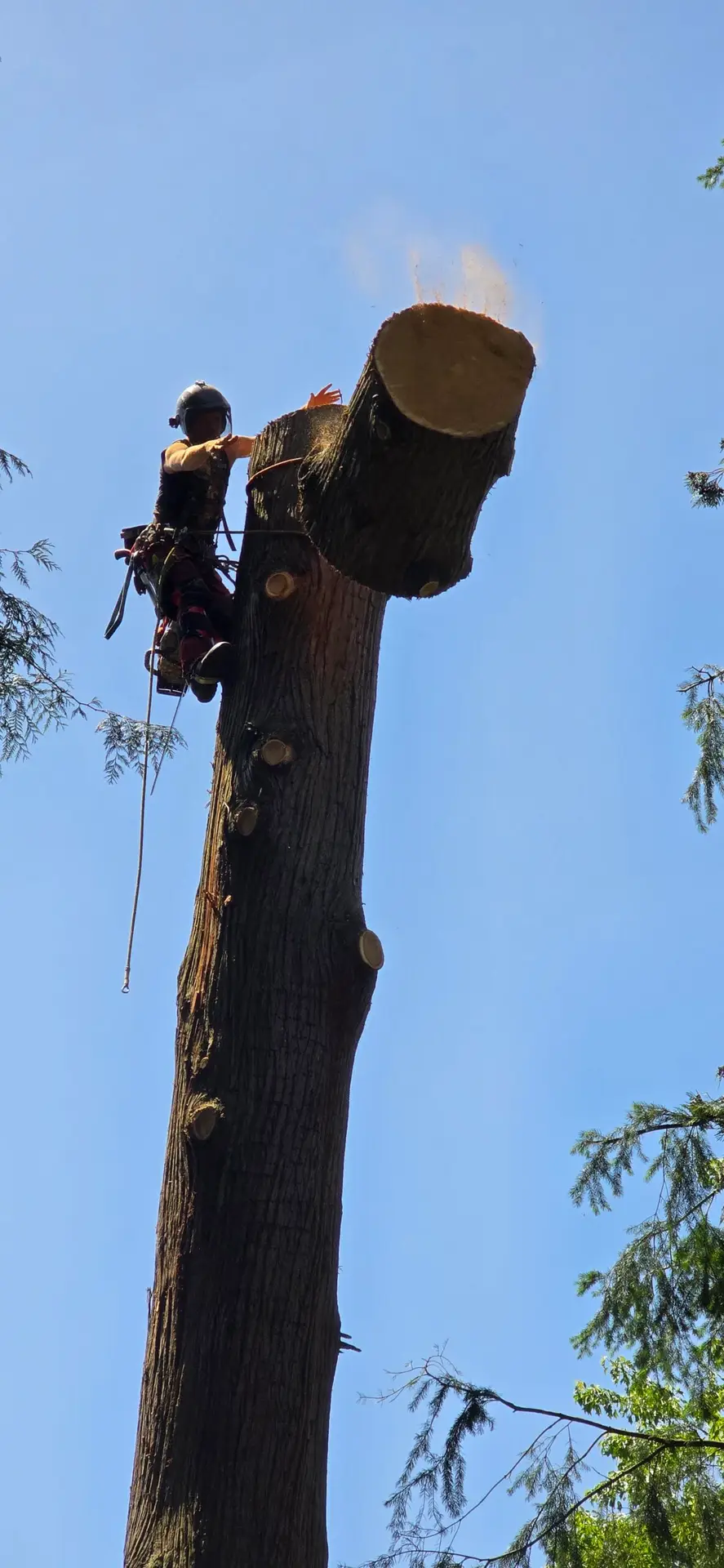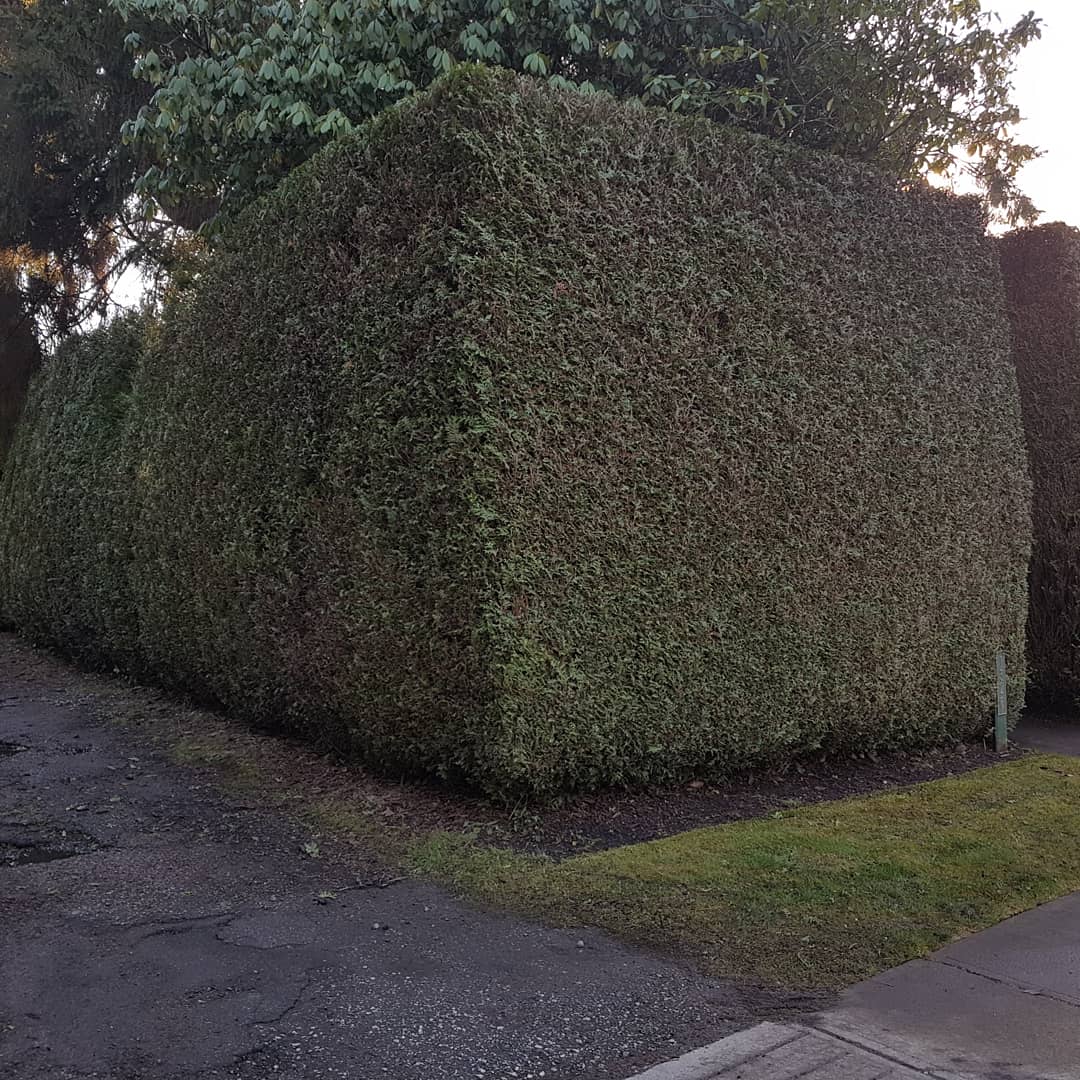So, you’re thinking about removing a tree on your Tsawwassen property? Maybe it’s diseased, posing a safety risk, or simply hindering your dream garden design. Whatever the reason, hold up! Before you grab that chainsaw, you need to understand the ins and outs of the process of getting Tsawwassen tree removal permits.
As Pinecrest Tree Care, we’ve helped countless homeowners in Tsawwassen navigate these regulations, and we’re here to share our expertise so you can avoid costly mistakes and unnecessary headaches.
The Importance of Tsawwassen Tree Removal Permits
While permitting processes can appear burdensome, tree protection bylaws are essential for preserving the environmental and aesthetic integrity of communities such as Tsawwassen. These regulations serve to:
- Maintain the Urban Forest: Trees provide critical ecological services, including air purification, carbon sequestration, habitat provision, and stormwater management.
- Preserve Property Values: Mature trees enhance curb appeal and contribute significantly to property values.
- Mitigate Hazards: Unregulated tree removal can destabilize slopes, increase erosion risk, and compromise the structural integrity of adjacent properties.
Tsawwassen’s Tree Removal Bylaws: Key Things to Know
The Municipality of Delta, which includes Tsawwassen, has specific bylaws governing tree removal on private property. Here’s a breakdown of the key elements:
- Protected Trees: Not all trees are created equal in the eyes of the bylaw. “Protected trees” typically include those exceeding a certain diameter at breast height (DBH), often around 20 cm (8 inches). Certain species, such as Garry oaks, may also receive special protection regardless of size.
- Permit Requirements: Generally, you’ll need a permit to remove a protected tree. The application process typically involves submitting a site plan, arborist report (more on that later), and a fee.
- Exemptions: Some exemptions exist, such as for hazardous trees posing an immediate threat to life or property. However, it’s always best to err on the side of caution and consult with a qualified arborist before taking action.
- Replacement Requirements: In many cases, the municipality will require you to replace a removed tree with a new one, either on your property or through a contribution to a community tree planting program.
Where to Find the Official Rules: Always refer to the official resources! You can find Delta’s tree protection bylaws on the Municipality of Delta website.
The Role of a Certified Arborist
Navigating tree removal regulations can present complexities. A certified arborist provides invaluable expertise:
- Tree Assessment: A comprehensive assessment of the tree’s health and condition to determine eligibility for removal under the bylaw.
- Arborist Report: Preparation of a detailed report outlining the rationale for removal, potential environmental impacts, and recommended mitigation strategies. This report is frequently a mandatory component of the permit application.
- Permit Application Support: Guidance through the permit application process, ensuring completeness and accuracy of all required documentation.
- Safe and Efficient Removal: Upon permit approval, execution of safe and efficient tree removal, minimizing disruption to the property and surrounding areas.
Common Justifications for Tree Removal Permits
Here are some common scenarios where you’ll likely need a permit to remove a tree in Tsawwassen:
- Disease or Infestation: If a tree is suffering from a severe disease or pest infestation that cannot be effectively treated, removal may be necessary to prevent the problem from spreading to other trees.
- Structural Instability: Trees with significant structural defects, such as large cracks, cavities, or excessive lean, pose a safety risk and may need to be removed.
- Property Damage: If a tree’s roots are damaging foundations, sidewalks, or underground utilities, removal may be the only viable solution.
- Obstruction of Sunlight or Views: While this is a less common reason for permit approval, it may be considered if the tree is significantly impacting the quality of life for residents.
Working with Pinecrest Tree Care
At Pinecrest Tree Care, we understand that tree removal can be a stressful process. That’s why we’re committed to providing our clients with clear, honest advice and reliable service. When you choose us, you can expect:
- Professionalism: Our team is fully licensed, insured, and trained to the highest industry standards.
- Expertise: Our ISA-certified arborists have the knowledge and experience to accurately assess trees and navigate the permit process.
- Safety: We prioritize safety in all our operations, protecting your property and our team.
- Customer Satisfaction: We’re not happy until you’re happy. We’ll go the extra mile to ensure you’re completely satisfied with our work
Ensuring Compliance to Tsawwassen Tree Removal Permits
Removing a tree without proper authorization may result in significant fines and legal consequences. Mitigate this risk by contacting Pinecrest Tree Care for a comprehensive consultation. We will assess your situation, outline available options, and guide you through the Tsawwassen tree removal permits process.
Allow us to assist you in maintaining a safe, aesthetically pleasing property while adhering to all applicable regulations. We are your local tree care specialists, dedicated to serving your needs.
Contact us today!
1. What happens if I remove a protected tree without a permit?
Removing a protected tree without the required permit can lead to significant fines from the Municipality of Delta. Additionally, you may be required to replace the tree and could face further legal repercussions.
2. How long does it take to get a Tsawwassen tree removal permit?
The processing time for tree removal permits can vary depending on the complexity of the application and the municipality’s workload. Generally, it can take several weeks to a few months. Pinecrest Tree Care can help expedite the process by ensuring your application is complete and accurate.
3. Can I appeal a denied tree removal permit?
Yes, the Municipality of Delta typically has an appeal process for denied tree removal permits. You’ll usually need to submit a written appeal outlining the reasons why you believe the denial was unwarranted, often supported by additional documentation or expert opinions.
4. Does Pinecrest Tree Care handle the entire permit application process for me?
Yes, Pinecrest Tree Care offers comprehensive permit application assistance. We’ll prepare all necessary documentation, including the arborist report, and liaise with the municipality on your behalf, streamlining the process and minimizing your involvement.
5. What factors influence the cost of tree removal?
The cost of tree removal depends on several factors, including the tree’s size, species, location, accessibility, and the complexity of the removal process. Contact Pinecrest Tree Care for a free, no-obligation estimate tailored to your specific situation.
People Also Ask
1. Are there any grants or rebates available for tree planting in Tsawwassen?
While specific grant programs vary, it’s worth checking with the Municipality of Delta and local environmental organizations for potential tree planting incentives. These programs can help offset the cost of replacement trees required by the permit process.
2. What are the potential liabilities if a tree on my property falls and causes damage?
As a property owner, you’re generally responsible for maintaining trees in a safe condition. If a tree falls due to negligence (e.g., known decay), you could be liable for damages. Regular inspections and proactive tree care by a company like Pinecrest can mitigate this risk.
3. How close to a property line can I plant a tree in Tsawwassen?
The Municipality of Delta has regulations regarding tree planting setbacks from property lines. These setbacks vary depending on the tree species and its mature size. Consulting with an arborist before planting can help you avoid future conflicts.
4. What are the signs of a hazardous tree that needs to be removed?
Signs of a hazardous tree include large dead branches, significant decay or cavities in the trunk, cracks, excessive leaning, and root damage. If you observe any of these signs, it’s crucial to have the tree assessed by a qualified arborist.
5. How does tree removal impact local wildlife?
Tree removal can disrupt wildlife habitat. Consider minimizing the impact by planting native species as replacements and consulting with Pinecrest Tree Care for environmentally sensitive removal practices.



